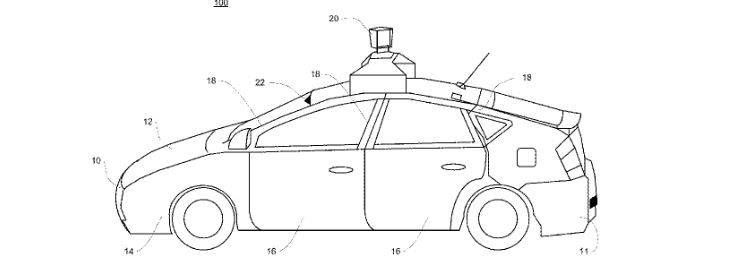Autonomous vehicles (AVs) can be viewed as vast networks of interconnected complex systems between which communications are critical. For example, an AV’s electronic control unit (ECU) must communicate seamlessly with machine vision systems so the ECU can make instantaneous driving adjustments based on objects and motion detected by the machine vision. Very few automotive companies have enough resources to develop a core company technology along with expertise in all technologies with which the core technology communicates. Companies that want to succeed in the automotive space must often be successful at building intellectual property (IP)-based strategic partnerships to gain access to other essential third-party technologies for operation and use. Forging these strategic partnerships not only allows a company to focus on its core capabilities but can also provide greater options for integration into the intended commercially operable vehicles and increase opportunities for technical and commercial success.
Companies that want to succeed in the automotive space must often be successful at building intellectual property (IP)-based strategic partnerships to gain access to other essential third-party technologies for operation and use
Automotive companies have a plethora of strategic partnership arrangement options available for their consideration. These include ordinary and discrete IP license arrangements, full technology license arrangements, component business arrangements, contract R&D arrangements, and joint venture arrangements. While each arrangement offers differing benefits at varying costs, a common thread among them is that they all require members to bring IP assets to the table. Companies without IP have less value to offer partners and, as a result, often get left behind in the market. Since each partnership arrangement requires specific types of IP along with specific company capabilities, once a strategic decision is made about the desired arrangement, it is imperative to adjust internal IP strategies accordingly.
Ordinary and discrete IP license arrangements
The first and most common type of strategic relationship is ordinary and discrete IP licensing. IP licensing is relatively straightforward and typically includes a first company (a “licensor”) licensing discrete IP assets (such as a patent or a trade secret) to a second company (a “licensee”). In return for the rights to use the discrete IP asset, the licensee pays royalties to the licensor. However, IP licensing often excludes access to additional know-how (e.g., how to implement the IP assets into a commercial product) and, as a result, the IP license may be worth much less to the licensee unless the license can also implement the licensed IP. It may come as a surprise, but this usually turns out poorly for the licensor as well because the licensee will likely exit the arrangement at the first opportunity, leaving the licensor behind. To increase the likelihood of success and foster mutual growth of the companies, consider a licensing arrangement constructed to include this additional know-how. The companies with the greater success at license arrangements tend to create true commercial relationships by transferring more than the discrete IP assets.

Full technology license arrangements
The next type of partnership expands upon this approach and is known as a full technology license. Rather than including only discrete IP assets, the technology license transfers a full technology bundle that includes IP assets along with toolkits, user guides and instructions for using the IP assets. In a successful technology license, a licensee generally should be enabled to build commercial products using the technology, succeed at selling the products, and be capable of servicing the products. As mentioned above, incorporation of a licensed technology into a licensee’s business may be critical for the success of both the licensee and the licensor. To further assist with attaining this goal, many licensors even dispatch entire teams to work with licensees to fully incorporate the IP assets into the licensee’s business.
Component business arrangements
A component business arrangement is another option, in which the licensee purchases the products themselves that include embedded technology rights. These rights may include the ability to install and resell the products (e.g., an automaker may purchase fully developed radar sensors for use in its vehicle) and may exclude the rights to manufacture the products. Because a selling company in a component business arrangement may retain its know-how as trade secrets, these arrangements may be especially desirable in markets where licenses are difficult to enforce, in markets where foreign entry is difficult, and in situations in which reverse-engineering of the product is difficult. A company that fully relies on a licensing model for revenue may have difficulty with this arrangement if it is unable to manufacture the product; however, where manufacturing capabilities exists, these arrangements allow the selling company to capture the full value of the product rather than just the value of the IP assets incorporated therein.
Contract R&D arrangements
Contract R&D arrangements are yet another option. These allow a company to purchase new product development from a seller. The company/buyer provides specifications to the seller who then designs a solution to fit the specifications, and the buyer typically retains the IP rights. This arrangement allows the seller to directly profit from its expertise while allowing the buyer to have a solution custom made for them. While this model has historically operated with multinational companies as sellers, emerging companies have recently flipped this model to offer outsourced innovation services to larger companies. Since smaller companies are more intricately familiar with quirks of a given market, they can frequently add value to larger competitors.

Joint venture arrangements
Lastly, in a joint venture, each member contributes IP assets to the partnership. Joint ventures may operate like a start-up company including taking on similar risks. As with start-ups, joint ventures typically function best when all parties are flexible and willing to put in extra effort where necessary. It is often important for all members to be in agreement with major decisions such as the scale of investment from each party, whether surplus cash will be reinvested or distributed, and the long-term goals of the venture. While the reward from a successful joint venture is shared among the parties, so is the potential risk, therefore, it can be vital for the parties to work together and develop relationships for the venture to succeed.
Each of the major strategic partnerships available to automotive companies comes with costs and benefits, and successful partnerships require strategic decision making from the initial arrangement selection through execution. Companies looking to enter a strategic partnership should first decide which systems require use of their core technology as well as which systems are required for the company’s core technology to operate. Risks and rewards of each arrangement should be considered from many angles ranging from legal and financial to sales and specific company strengths. Before landing on a specific arrangement, a company should evaluate the strengths and weaknesses of its IP portfolio and consider what value the portfolio can provide to a partner. An automotive company’s IP assets can also serve as a basis for strategic partnerships of all types that help all member companies grow and prosper, in addition to providing a means to prevent competitors from adopting such IP assets or entering a specific market.
While each arrangement offers differing benefits at varying costs, a common thread among them is that they all require members to bring IP assets to the table
For example, the automotive company’s IP assets can be part of a cross-license or sharing arrangement or provide a means to facilitate joint venture arrangements. Potential partners for each arrangement should be considered and evaluated before selecting the specific arrangement, and selected arrangements should be explored in depth prior to finalising the decision. Each potential partner’s strengths and weaknesses should be examined in detail to determine how weaknesses can be supplemented and how strengths can flourish. In some instances, more than one arrangement might be implemented between two companies, for example, a full technology license agreement coupled with contract R&D arrangements to help implement the licensed technology into the company’s own products and services.
Because of the interconnectivity of vehicular systems and the importance of communications between the core vehicle technology and other technologies with which the core technology communicates, companies that want to succeed in the automotive space must often be successful at building IP-based strategic partnerships. Such partnerships typically allow a company to focus on core strengths while providing an opportunity for all partners to succeed in the market. Given that these partnerships are all based on IP, it is critical for companies interested in attracting potential partners to first develop a strong IP portfolio.
About the author: Joseph M. Teleoglou is a lawyer at Snell & Wilmer, with experience advising automotive manufacturing clients on patent-related considerations related to autonomous vehicles
